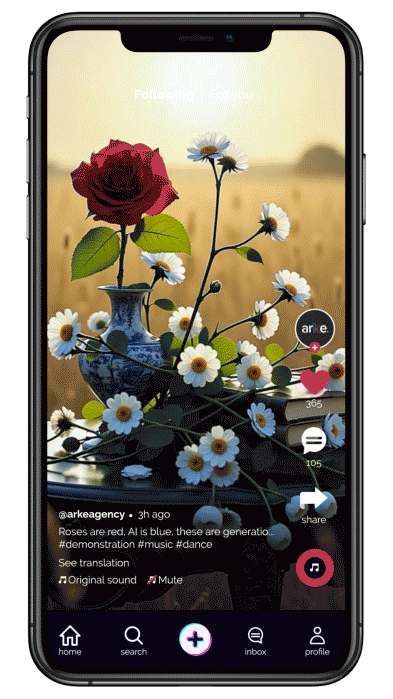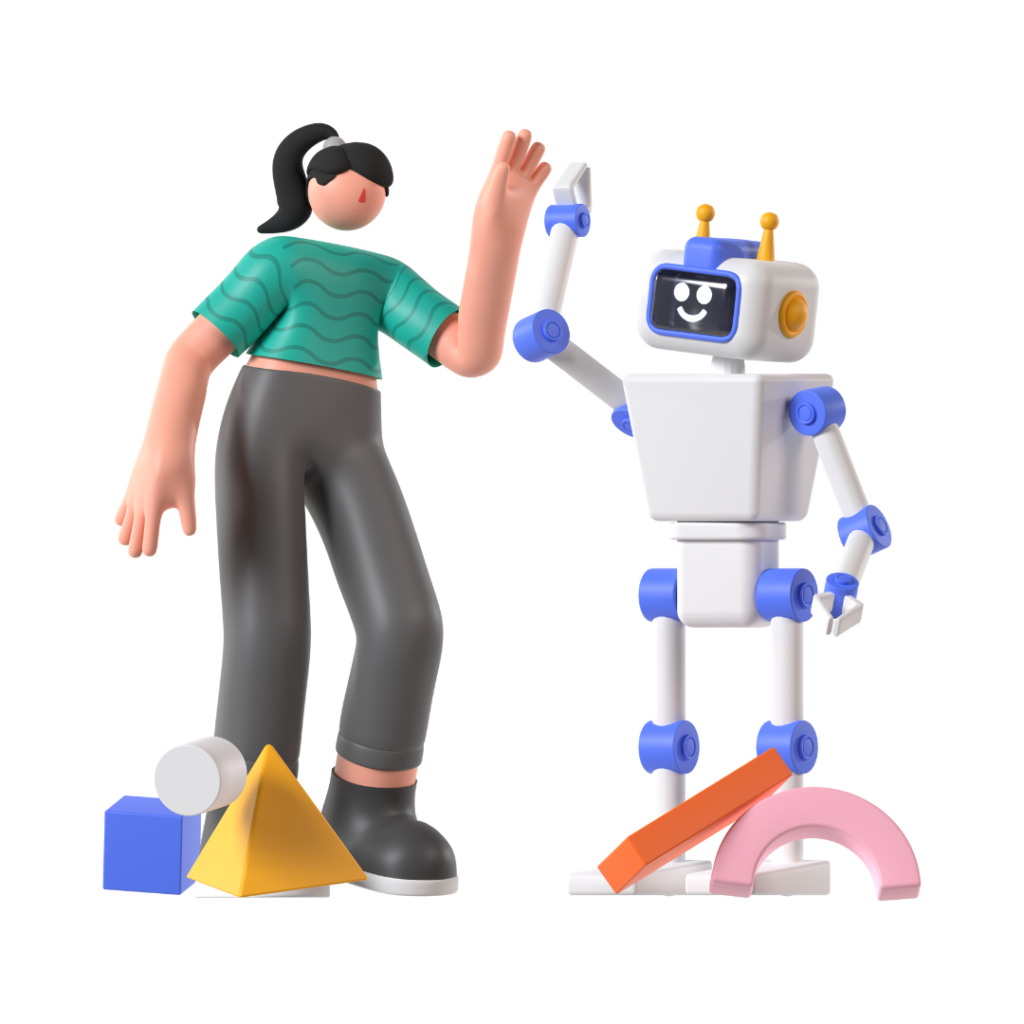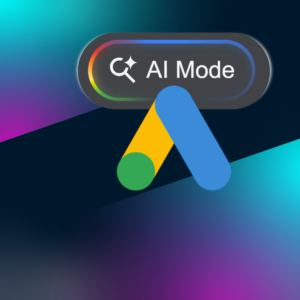AI for Creatives: Selling the Dream, Not the Machine
On nearly every online platform, discussions about AI are everywhere. It can be a polarising topic, particularly when it comes to its use within the creative process in marketing, but exploring new tools is how our industry evolves. With so much coverage from a wide range of perspectives, it’s easy to get swept up in how everyone else is using AI. However, it’s worth taking a step back to consider where else in our processes we might benefit from a bit of machine assistance. Enter Blair Foley, Arke’s Design & Animation Lead, who shares his experience of pushing past your fears and using AI to help communicate the marketing creative vision early in the process.
The sky is falling. The world is ending. The machines are taking over…
Well, not quite. We’re a long way from Skynet, but since AI tools have become widely accessible, the conversation around them has taken on an alarmist tone. This technology is evolving at a mind-boggling pace, regulations are scrambling to keep up, and for every exciting opportunity, there’s an inevitable counterpoint of concern. Are we all doomed to drown in a sea of Ghibli-generated selfies or action figures? That’s human nature; we react to the unknown with a mix of wonder and fear. I’ve felt both myself during my AI journey.
Within the marketing world right now, particularly when it comes to marketing creatives, I believe there is too much focus on AI-generated assets making their way to market, sparking backlash over authenticity, originality, and ethical concerns. But the real power of AI (at this stage) in marketing isn’t about replacing the final product, it’s about selling the vision. Used well, it’s an incredible tool for ideation, helping clients see the creative direction before production begins. Personally, when developing ideas for speculative work or tenders, AI has proved invaluable, allowing me to visualise concepts in ways I never could have imagined.
In my approach to AI, I follow three principles:
1. Lay a solid foundation
The better your inputs, the better your outputs. If your source imagery and prompts are closely aligned with your final vision, AI becomes easier to direct. While these tools may feel magical, without the correct inputs, you risk deviating from established contexts, styles and imagery, rendering your creative output for the client irrelevant. But if you build strong scaffolding, you’ll be closer to your goals and spend less time fixing all the bad results.



Generator: Midjourney
Prompt: An ornate Victorian-era carved wooden table, with a rose inside of a blue and white bone-china vase, next to a pile of old leather-bound books. The background is a lush red velvet curtain.
2. AI is an idiot savant: work with it, not against it
AI is powerful, but it’s far from perfect. The key is knowing when to refine, when to compromise, and when to embrace the unexpected. It often misfires in ways that open up new creative possibilities, but generating something truly usable still takes hundreds of iterations. Even with Runway’s new continuity-focused tools for video, you might only get a few workable seconds per attempt. And there’s an environmental cost: AI consumes huge amounts of computing power (MIT). It’s a necessary evil for now, but one worth keeping in mind.


Left Image: Generator: Runway / Prompt: A white gloved hand comes into the frame, picks up the rose from the vase and takes it out of the frame. A second blue, latex gloved hand comes into frame and dusts the top of the pile of books. Dynamic movement. Cinematic.)
Here is a text book example of AI going “rogue”. While attempting to bring my still image to life with Runway, the generator misinterpreted my prompt of a “second blue, latex gloved hand comes into frame and dusts the top of the pile of books” as the literal spreading of dust on the books, almost as if it were dusting a cake with icing sugar.
The tool hasn’t really done anything wrong here. It followed my prompt as best it can, based on the reference image and what I asked it to do. The issue is with my wording. My prompt wasn’t specific enough. If I want to see a feather duster actually cleaning the books, I need to say that outright. This highlights my point about AI being an idiot savant: it’s remarkable, but lacks critical thinking or a “common sense” understanding of context. You have to lead the horse to water AND teach it how to drink.
Right Image: Generator: Runway / Prompt (with a further prompt used in ChatGPT to bump up the word count to 1000 characters): A polished wooden table sits under soft, cinematic lighting. A delicate glass vase holding a single red rose stands beside a small stack of old hardcover books. A white-gloved hand enters from the left, moves with elegance, and gently lifts the vase from the table, carrying it out of frame. A beat of stillness. Then, a second hand appears from the right, wearing a bright blue latex glove and holding a pink feather duster. With light, precise strokes, it dusts the top of the books. The scene is shot with a dramatic, filmic style – shallow depth of field, smooth camera movement, rich shadows. Textures feel vivid and tactile: the shine of the wood, the softness of the feather duster, the stiffness of the old book covers. The moment has a theatrical, slightly surreal tone, like a quiet scene in an art film. Each movement is intentional, slow, and graceful, capturing a sense of ceremony and quiet contrast between the two gloved figures.
3. Put your creation in context
AI-generated content feel more convincing when placed in its intended environment. If it’s a social ad, mock it up as an Instagram post. If it’s a billboard, show it in the real-world location. This helps strip away AI’s inherent uncanniness, making it easier for clients to understand how your marketing creative idea would work in the wild and not concentrate on the potential “ick” AI imagery may evoke.

At this stage, I am not a slave to the robots. Instead, we have a healthy collaboration going on. I hope that more designers and creatives in marketing can overcome their AI trepidation and instead see it for its potential good in our work practices. It’s for creative thinking. It accelerates ideation. It helps craft compelling speculative work. It gets clients excited about an idea before production even begins. AI isn’t here to replace human creativity, it’s here to enhance it.
01010100 01101000 01100101 01101110 or, “Teamwork makes the dream work”
Want to see your ideas come to life? Check out our design services and get in touch with us today to start your creative journey with Arke.






